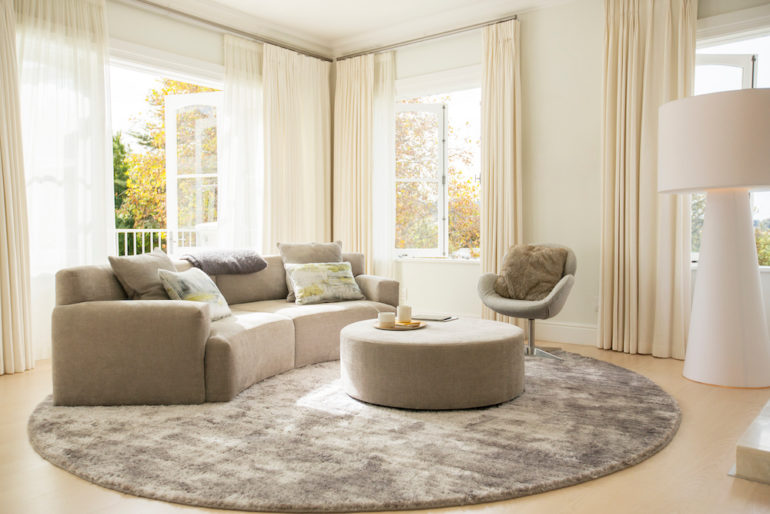Popular home furnishings stores and design magazines increasingly feature curved furniture. Pieces with sloping lines and rounded forms echo the past and add both comfort and sophisticated style to home decor. Here’s what you need to know about the curved furniture trend.
Everything old is new again
Curved furniture was initially popular in the 1970s and ‘80s. Designers developed it as a reaction to the straight lines and right angles of the 1950s and ‘60s. Today’s curved elements in home furnishings also echo the Art Deco styles of the early 20th century.
The current popularity of the 1970s and ‘80s decor has brought curved furniture back. These pieces are also seen as a reaction to the Covid-19 pandemic. Just as time working at home found us shifting to more comfortable clothing, increased time around the house has led to a desire for the comfort and calm that rounded corners and softened edges promote. There’s scientific evidence that humans have an innate preference for circular forms, which are found throughout nature.
But curved furniture isn’t just for comfort. Today’s sculptural furniture can add bold and stylish elegance to a wide range of decor styles. And curved pieces can create good spots for conversation and improve the flow of a room.
Incorporating curved furniture into your home
- If you like the look of curved furniture but aren’t sure the trend is right for you, start small. A round lamp, curved mirror, or circular ottoman is a good place to begin without making a major investment.
- Curved furniture upholstered in bold colors and sumptuous fabrics like velvet will stand out almost like a piece of art. For a different look, you can accentuate the natural appeal of curves by buying curved pieces covered in soothing colors and textural fabrics and placing them in settings filled with organic materials such as stone and unfinished wood.
- Pairing curved furniture with straight-lined pieces adds interest to a room. Think curved chairs around a simple rectangular dining table, a rounded headboard against a bedroom accent wall covered with geometric wallpaper, or a circular coffee table in front of a traditional sofa.
- If a curved piece of furniture is particularly bold, keep accessories minimal. A curved sofa, for example, will look best with only a few simple pillows.
- A curved sofa can look particularly sophisticated if it is “floated” in a room so that people can see all its sides.
- If you choose to fill a room with curved furniture, make sure the pieces are upholstered in different materials to add contrast.
Related – Getting Comfortable with Choosing the Right Sofa


